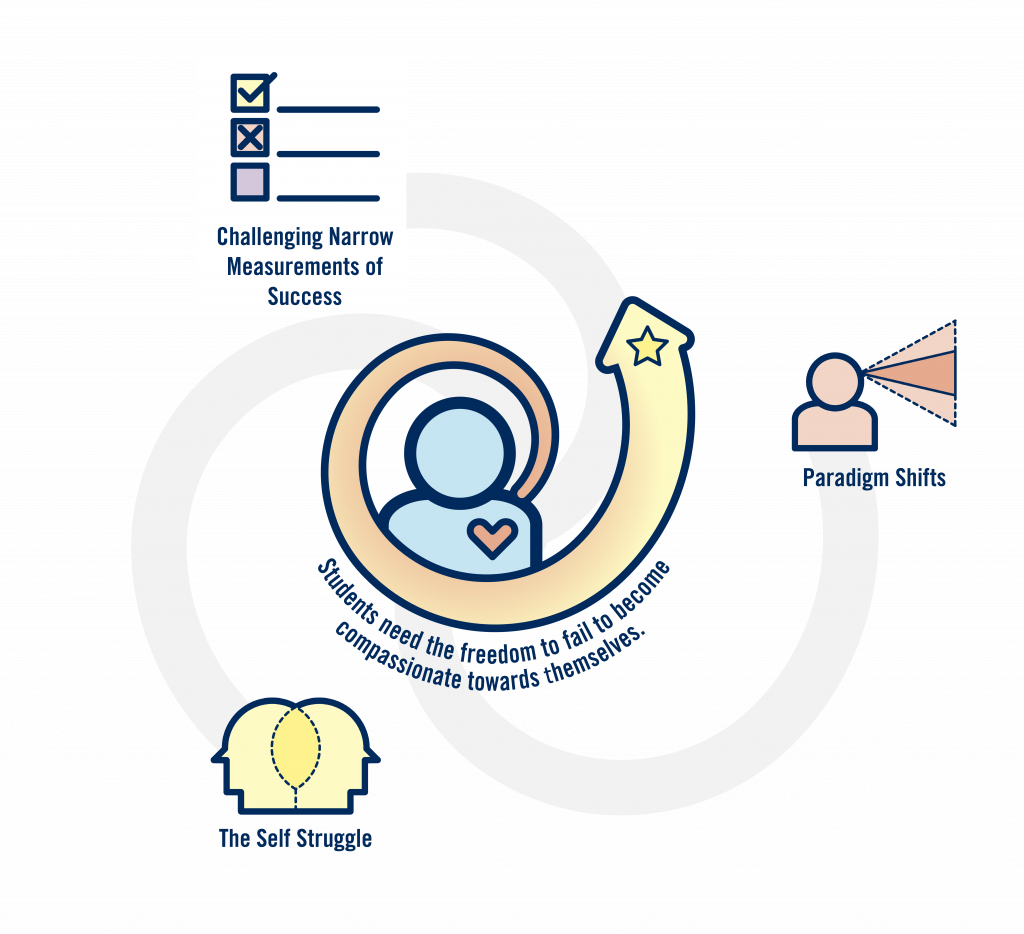The Tech2U Pilot Program: Through the Eyes of Student Classroom Ambassadors
What’s Your Why: Personal Connection in Stories
Project Insights from “Fostering the Courage to Learn: Student Experience at the Faculty of Dentistry”

Written by: Sabrina Wu, Senior Research Assistant
In the Faculty of Dentistry Student Experience project, we partnered with the Faculty of Dentistry to gain a deeper and nuanced understanding of the current Dentistry student experience and how it can be strengthened. While this project was specific to the Dentistry student experience, I found that the student needs around learning resonated with our team as well in our own learning experience. I have learned a lot through this project about the courage it takes to continue down the path of learning, as well as how to communicate what I have learned.
Robarts is Re-designing its 5th floor! Call for Participants

Share Your Feedback and Vision for Robarts Library 5th Floor
Sign up to share. Receive a $10 gift card as a thank you!
Are you interested in digital humanities? Are you curious about a space for innovative digital scholarship? Have you ever used digital tools like GIS, SPSS, or more?
The Quiet Power of Silence

Betelehem Gulilat 
Nikhil Parwar
Written by Betelehem Gulilat, Content Writer
Illustrated by Nikhil Parwar, Digital Storyteller
Why do we as humans feel uncomfortable being in a space of silence? Whether it’s in the middle of a conversation, a work meeting, a stroll outdoors, or staying indoors in solitude, most of us feel unsettled by the absence of sound in almost every aspect of our lives. When silence is used with the right intentions, it can bring a world of meaning to our lives. It leaves us no other choice but to express empathy towards ourselves and others around us.
Project Insights from ‘Celebrating International Students: Being Brave Away from Home’



Written by Robin Martin, Serena Tran & Yuwei Jiang, Design Research Assistants for the Celebrating International Students Project
Illustrations by Nikhil Pawar & Marielle Dilla – Digital Storytellers
The international student experience at the University of Toronto (U of T) is anything but homogenous. The Celebrating International Students project began during the 2019-2020 Design Thinking Experience Program (DTEP), and quickly took off after recognizing just how complex, and at times similar, the challenges of being an international student truly is. Over the last year and a half our research teams have delved into our archive of more than 600 interviews to get a broadened sense of the international student experience from before and during pandemic. We were also grateful to have interviewed several U of T staff in October to round out the data even further.
In this blog post, we will be sharing the main insights we have uncovered after interviewing and carefully analyzing our existing data, as well as our team members’ personal reflections from this project. We also share Building Bravery Design Principles to empower one another in celebrating international students at U of T, and a link to our report.
The Art of Active Listening

Betelehem Gulilat 
Vlada Gorchkova
Written By Betelehem Gulilat, Content Writer
Illustrated By Vlada Gorchkova, Digital Storyteller
Part of what makes us human is the need for forming connections that make us feel truly heard and understood. There is a sense of belonging that comes with feeling supported that allows us to deeply understand ourselves, one another and discover what we find meaningful in our lives. This wouldn’t be possible without the help of active listeners. Through the art of active listening, a simple conversation can inspire change, strengthen relationships, and lead to innovation.
Active listening is fundamentally the ability to attentively understand the meaning behind the words of the speaker without the intrusion of your own thoughts, opinions, and judgment on the matter. Unlike the simple act of listening to words, active listening involves understanding why the person may be feeling a certain way, where they are coming from, and the message you are receiving. (1)
What We Learned from the ‘Let’s Talk About Failure’ Project



Written by Sanskriti Maheshwari, Rosemarie Shephard, and Amal Yusuf, Data Analysis Researchers for the Let’s Talk About Failure project

The Innovation Hub partnered with the Division of Student Life Academic Resilience Initiative to learn about UofT students’ experiences with failure: how they define failure, how they endure it, and the impact it has on their lives. We explored existing data on the topic in our archive of over 600 interviews and reached out to students at UofT to take part in our dialogue-based feedback sessions. We approached this project with the intention of hearing from and listening to students’ stories surrounding failure in their own words and on their own terms.
Delving into the Digital Campus – Exploring the Importance of Digital Communities to UofT Students
By Ayaan Hagar – Project Team Lead, Kethmi Egodage – Community, Social Connection & Support for Students Team Member, and Betelehem Gulilat – Lead Editor & Writer
Our new reality has accelerated change in all areas of our lives, from work to socializing, we’re staying connected to our communities through the most hyper-connected platform called the internet. What elements of digital connections and communities help students feel like they’re connected with one another? With this question in mind, we’d like to introduce the Digital Community & Connectedness Project. Building on our previous work, this project is exploring how the student experience of finding and engaging in community continues to shift during this time, and what implications this has for those who build and facilitate connections within the online UofT community.

